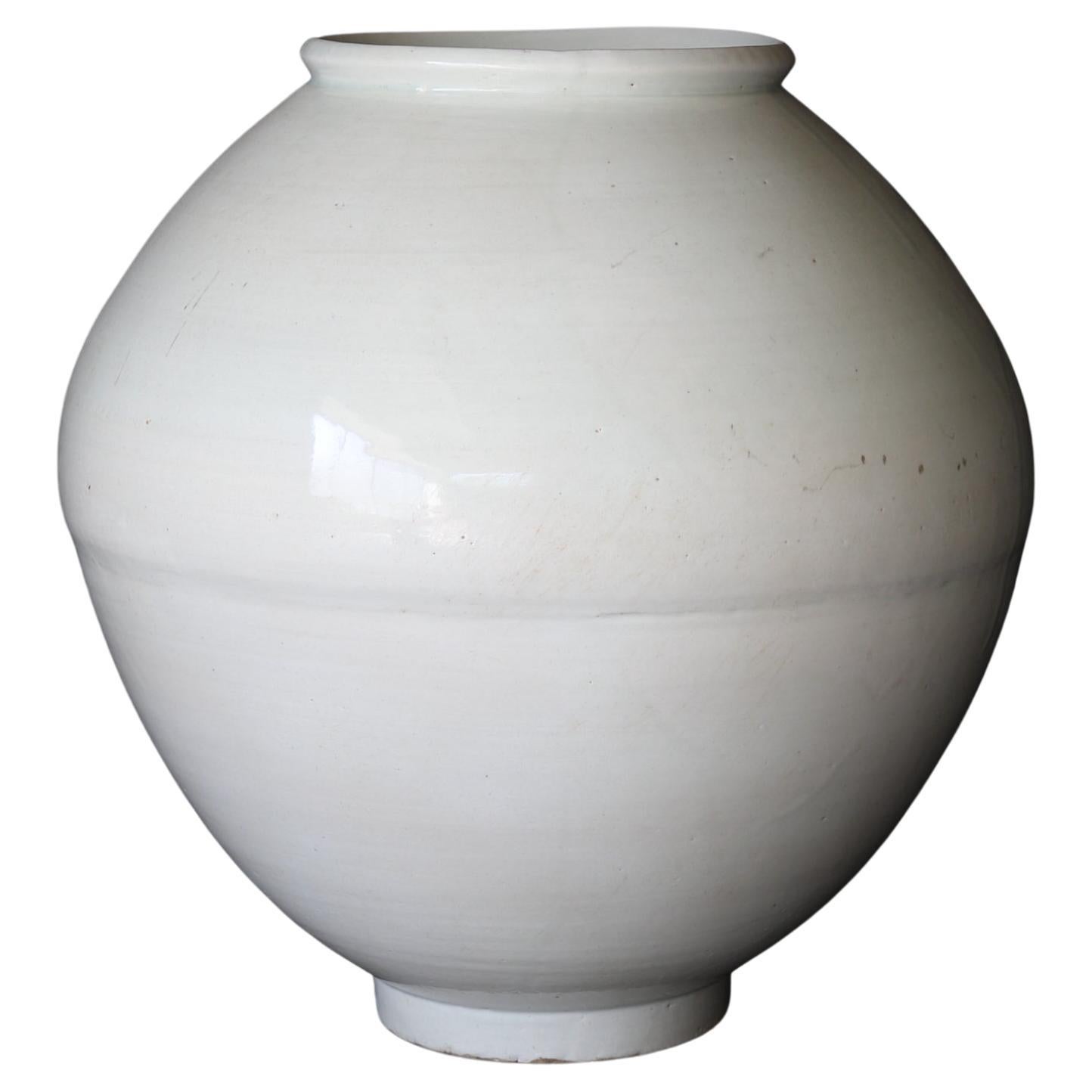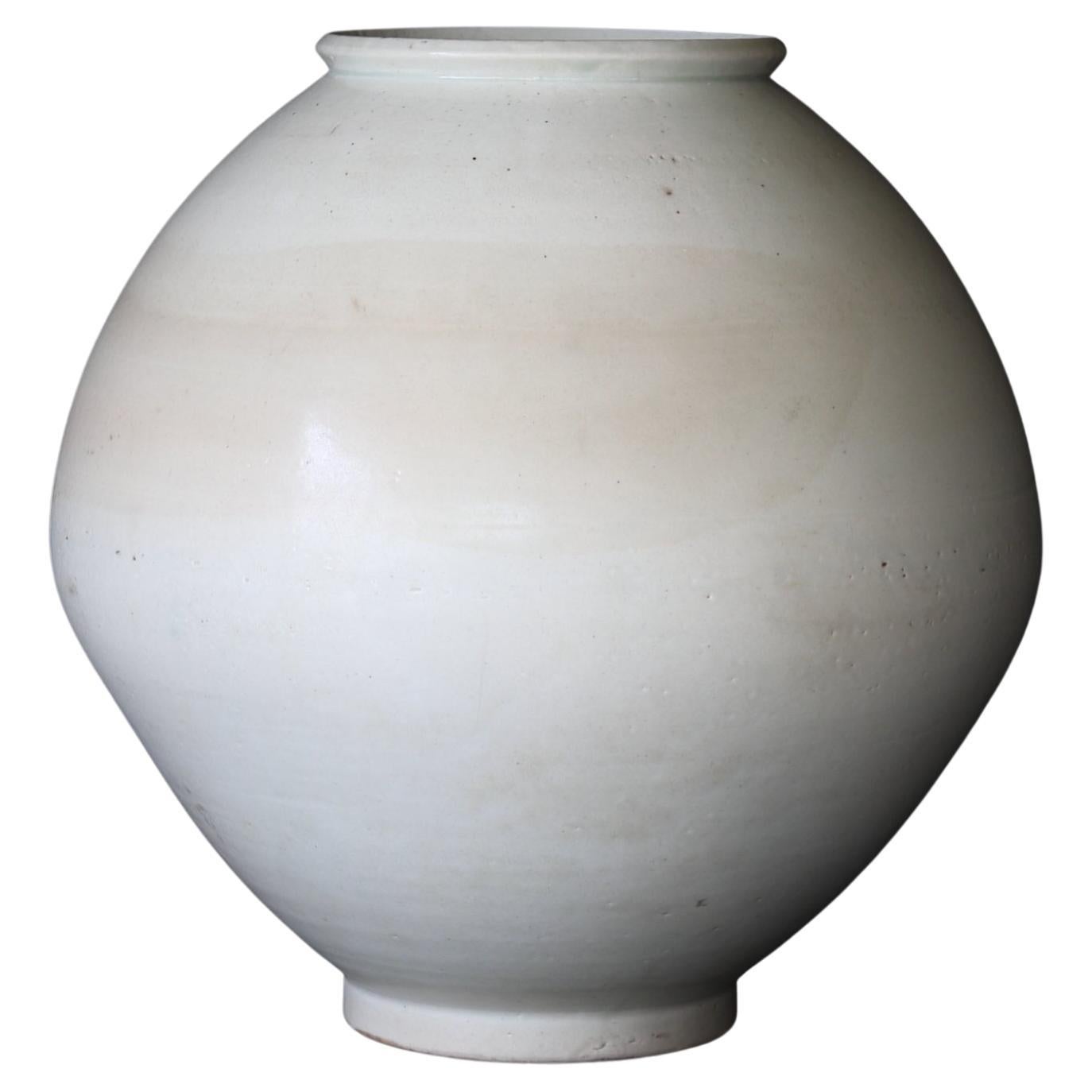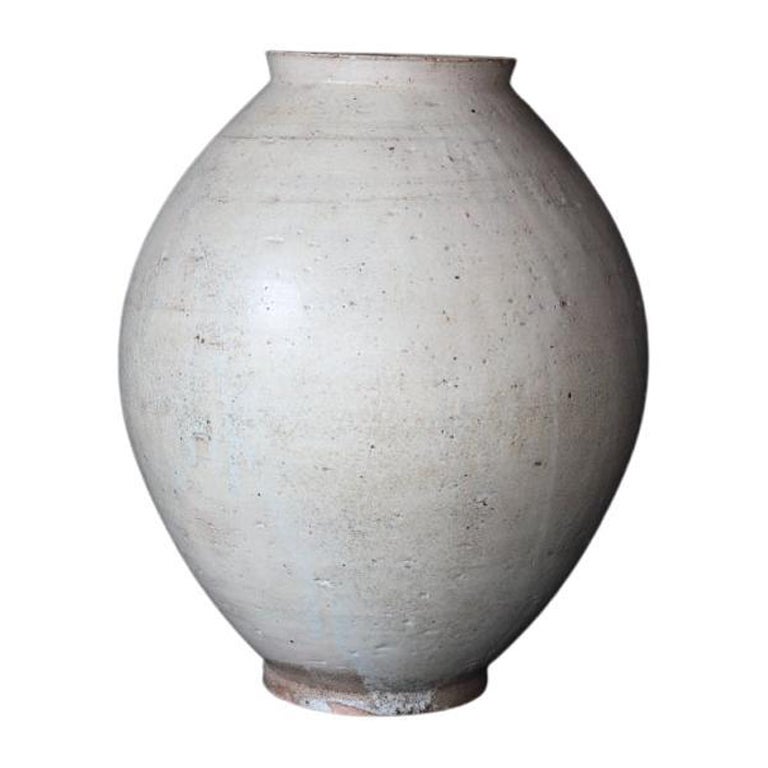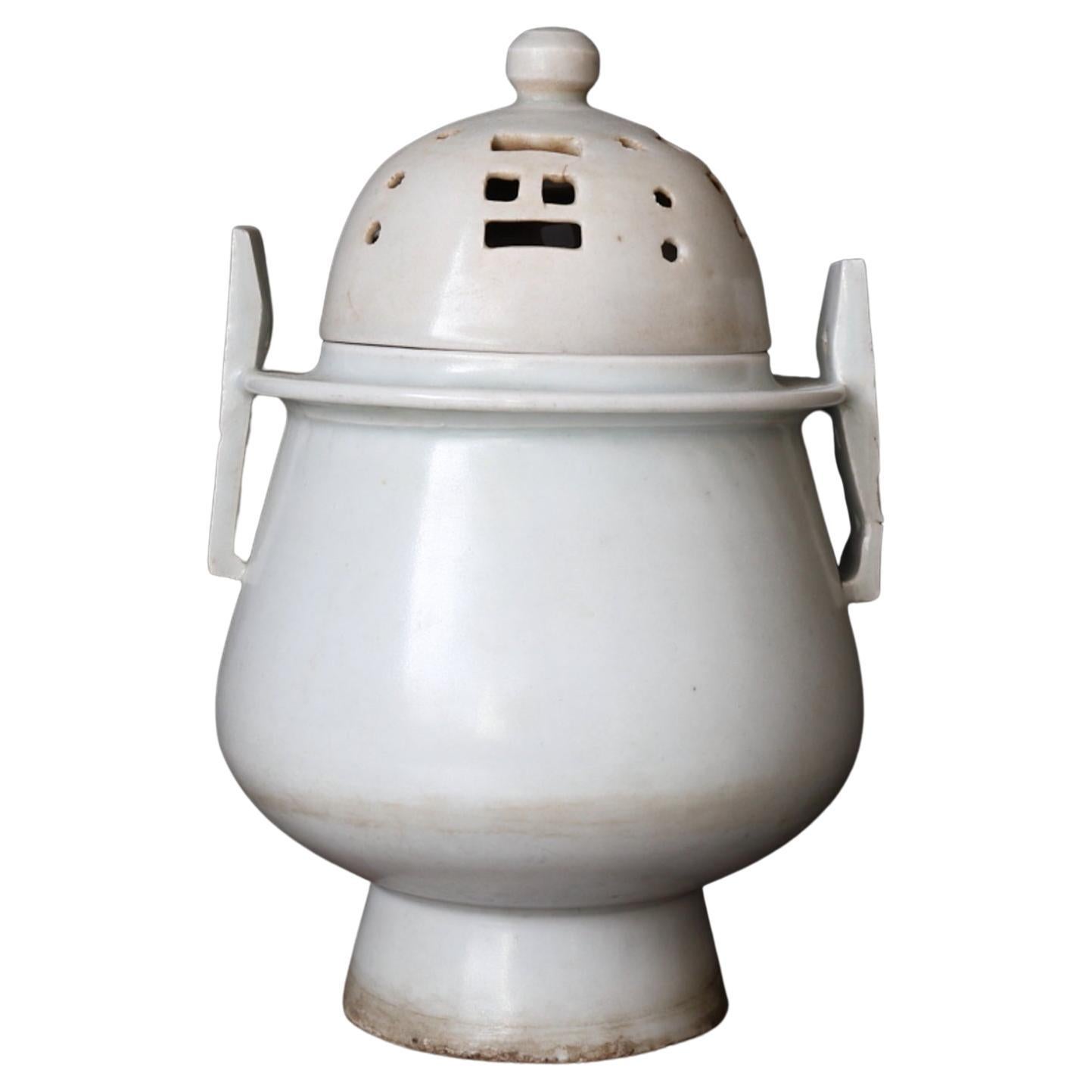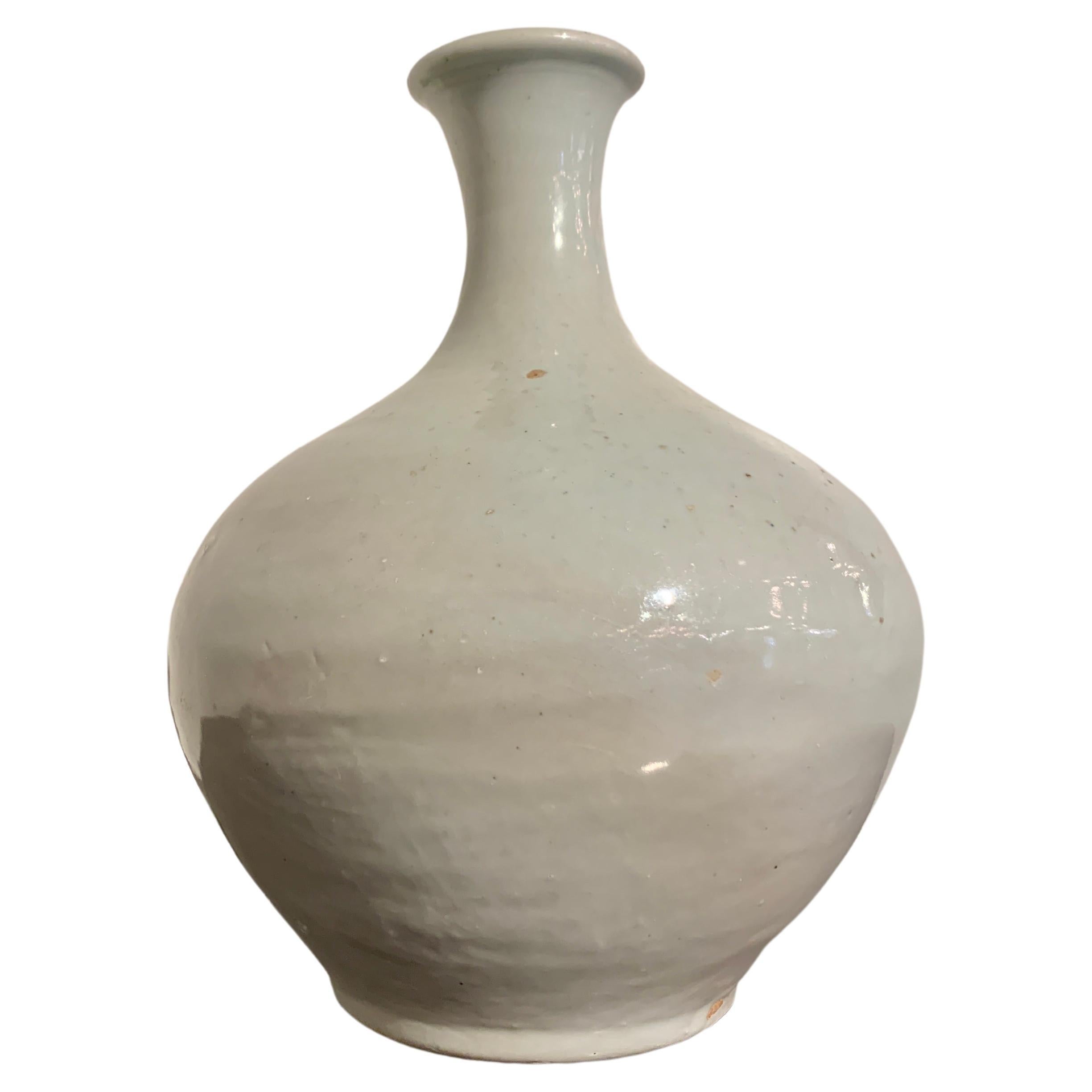Items Similar to White Porcelain Vase / 17th Century / Korean Antiques / Joseon Dynasty
Want more images or videos?
Request additional images or videos from the seller
1 of 21
White Porcelain Vase / 17th Century / Korean Antiques / Joseon Dynasty
About the Item
This product is a white porcelain bottle from the Joseon Dynasty. People in those days used bottles like this to make soap from waste oil.
With use, the porcelain frayed and curled up again, and the worm-eaten mouth and the oil-stained scenery engraved on the white porcelain are traces of the simple life of the time. In the Japanese tea ceremony, you can feel the spirit of apology and rust in such a simple taste, and find the best beauty.
It smells a little oily. There is no water leakage, but if you use it as a flower vase, please use it after preparing a (ex .bamboo) narrow cylinder.
- Dimensions:Height: 7.49 in (19 cm)Width: 4.73 in (12 cm)Depth: 4.73 in (12 cm)
- Materials and Techniques:
- Period:
- Date of Manufacture:1392-1910 CE
- Condition:
- Seller Location:Kyoto-shi, JP
- Reference Number:1stDibs: LU7673233370632
About the Seller
No Reviews Yet
Vetted Seller
These experienced sellers undergo a comprehensive evaluation by our team of in-house experts.
Established in 2012
1stDibs seller since 2022
- ShippingRetrieving quote...Ships From: Kyoto-shi, Japan
- Return PolicyA return for this item may be initiated within 2 days of delivery.
More From This SellerView All
- Moon Jar 'Dalhanari', Lot3 / 17th Century / Korean Antiques / Joseon DynastyLocated in Kyoto-shi, KyotoThis is a white porcelain jar from the mid-Joseon period, also known as a "Talhunari" or "moon jar". During the Joseon Dynasty, which was strongly influenced by Confucianism, the purity of white porcelain was particularly prized in its artistic expression due to its Confucian sensitivity. The defining characteristic of white porcelain during this period was its pure white color, but there were many subtle variations in the white hues, with some being classified as milky white, snowy white, ashen white, and bluish white. The term "Talhunari" means "moon jar" in Korean, and it refers to the large, round shape of the jar, resembling a full moon. It was named by Kim Whanki, a representative abstract painter of Korea. The soft, curving lines and sturdy body that seems to embrace the full moon give the jar both power and tranquility. This type of jar was produced in large quantities during the 17th century. The white of the moon jar is not the pure white of early Joseon porcelain...Category
Antique 17th Century Korean Ceramics
MaterialsCeramic, Porcelain
- Moon Jar 'Dalhanari' - Lot2 / 17th Century / Korean Antiques / Joseon DynastyLocated in Kyoto-shi, KyotoThis is a white porcelain jar from the mid-Joseon period, also known as a "Talhunari" or "moon jar". During the Joseon Dynasty, which was strongly influenced by Confucianism, the purity of white porcelain was particularly prized in its artistic expression due to its Confucian sensitivity. The defining characteristic of white porcelain during this period was its pure white color, but there were many subtle variations in the white hues, with some being classified as milky white, snowy white, ashen white, and bluish white. The term "Talhunari" means "moon jar" in Korean, and it refers to the large, round shape of the jar, resembling a full moon. It was named by Kim Whanki, a representative abstract painter of Korea. The soft, curving lines and sturdy body that seems to embrace the full moon give the jar both power and tranquility. This type of jar was produced in large quantities during the 17th century. The white of the moon jar is not the pure white of early Joseon porcelain...Category
Antique 17th Century Korean Antiquities
MaterialsCeramic, Porcelain
- Moon Jar / Korean Antique vase / Joseon Dynasty / 18th CenturyLocated in Kyoto-shi, KyotoIt's a wonderful moon jar. It is a rare size that is suitable for the alcove of a Japanese tea room. It is shaped at once without connecting the uppe...Category
Antique 18th Century Korean Antiquities
MaterialsCeramic
- White Porcelain Incense Burner / Korean Antique / Joseon Dynasty/1392 - 1897 CELocated in Kyoto-shi, KyotoThis incense burner presents the characteristics of a typical Yi Dynasty Joseon Dynasty incense burner with a body that rises smoothly from the base, openworked ears and a semi-circu...Category
Antique 17th Century Korean Antiquities
MaterialsCeramic
- Bottle Buncheong Ware / 15th Century / Korean Antiques / Joseon DynastyLocated in Kyoto-shi, KyotoPowder blue celadon ware is a type of porcelain made in Korea during the first half of the Joseon dynasty, mainly in the 15th century. It was made by applying a fine white slip over iron-rich clay, then covering it with a transparent glaze and firing it. It was mainly used for daily utensils such as bowls and bottles. Joseon ceramics...Category
Antique 15th Century and Earlier Korean Antiquities
MaterialsCeramic, Porcelain
- Celadon Incense Burner with Peony Arabesque Design/Chinese Antique/14th-17th CLocated in Kyoto-shi, KyotoThis is a Celadon three-legged incense burner with peony arabesque design. Since the 14th century, Dwarf sedge was planted in this pot to decorate the tea room, so in Japan it is ...Category
Antique 15th Century and Earlier Antiquities
MaterialsCeramic
You May Also Like
- Korean White Glazed Porcelain Bottle Vase, Joseon Dynasty, 19th Century, KoreaLocated in Austin, TXA subtle and elegant Korean Joseon Dynasty white glazed porcelain bottle vase, 19th century, Korea. The bottle vase with an unusual globular body, nar...Category
Antique 19th Century Korean Ceramics
MaterialsPorcelain
- Korean White Glazed Porcelain Bottle Vase, Joseon Dynasty, 18th CenturyLocated in Austin, TXA quiet and elegant Korean white glazed bottle vase, Joseon Dynasty, late 18th century, Korea. The graceful vase beautifully proportioned, resting on a short recessed foot, with a...Category
Antique Late 18th Century Korean Ceramics
MaterialsPorcelain
- Antique Korean Porcelain Peony Jar Joseon DynastyLocated in Atlanta, GAA Korean white porcelain jar with underglaze blue painting of large peonies with leaves circa second half of 19th century, Joseon Dynasty. Considered associated with Punwon-ri kilns ...Category
Antique Late 19th Century Korean Other Ceramics
MaterialsPorcelain
- Antique Korean Porcelain Peony Jar Joseon DynastyLocated in Atlanta, GAA Korean white porcelain jar with underglaze blue painting of large peonies with leaves circa second half of 19th century, Joseon Dynasty. Considered associated with Punwon-ri kilns ...Category
Antique Late 19th Century Korean Other Ceramics
MaterialsPorcelain
- Antique Korean Celadon Bottle Vase Joseon DynastyLocated in Atlanta, GAA Korean ceramic bottle-form vase circa 16th century Joseon Dynasty. It was likely intended as a wine bottle, the pear-shaped vessel with flaring neck feature a celadon glaze exterio...Category
Antique 16th Century Korean Archaistic Ceramics
MaterialsCeramic
- Korean Silla Dynasty Footed Jar, circa 6th Century, KoreaLocated in Austin, TXA charming Korean high fired gray pottery stoneware footed vessel, Three Kingdoms Period, Silla Kingdom, circa 6th century. The vessel of traditiona...Category
Antique 15th Century and Earlier Korean Antiquities
MaterialsPottery, Stoneware
Recently Viewed
View AllMore Ways To Browse
Antique White Porcelain
White Porcelain Vase
Best Asian Art
Dynasty Antique Furniture
Antique White Porcelain Vases
Antique White Stain
Antique Asian Art Porcelain
Dynasty Porcelain
Waste Can
Antique White Stain Furniture
White Asian Vases
Dynasty Ceramic
17th Century Ceramic
Asian White Porcelain Vase
17th Century Japanese Art
Korean Japanese
Antique Cans And Bottles
Antique Asian Tea
